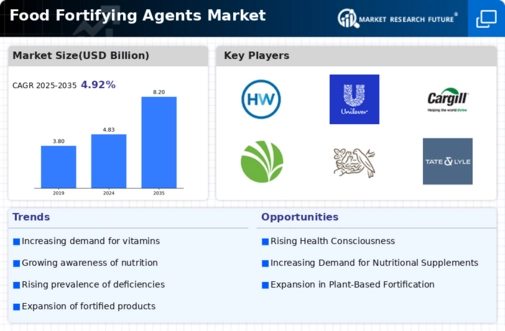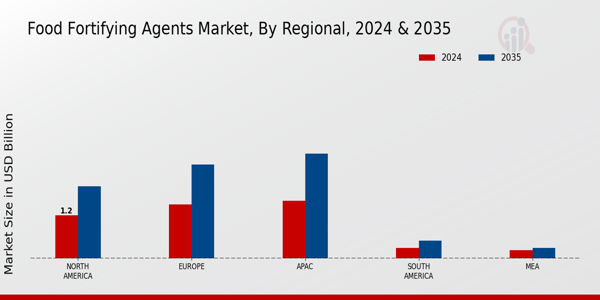Market Share
Food fortifying agents Market Share Analysis
The Food Fortifying Agents Market, a crucial segment within the broader food industry, is witnessing dynamic shifts in market share positioning strategies. As the demand for fortified foods continues to rise, companies are strategically positioning themselves to capture a larger slice of the market pie. Several key strategies are employed to gain a competitive edge and enhance market share. One prevalent approach is product differentiation. Companies are investing heavily in research and development to create unique and innovative food fortifying agents that cater to specific consumer needs. Whether it's fortifying with vitamins, minerals, or other essential nutrients, the emphasis is on delivering products that stand out in terms of nutritional value and appeal. This strategy not only attracts health-conscious consumers but also helps in building brand loyalty. Furthermore, strategic partnerships and collaborations play a pivotal role in market share positioning. Companies are forging alliances with food manufacturers, retailers, and other stakeholders to expand their reach and distribution channels. By integrating their fortifying agents into a wide range of food products, these companies can tap into existing consumer bases and gain exposure in diverse markets. Collaborations also allow for shared resources, reducing costs and increasing efficiency in production and distribution. Another effective strategy involves geographical expansion. As the demand for fortified foods increases globally, companies are focusing on entering new markets and establishing a strong presence. This may involve adapting products to suit regional tastes and preferences, complying with local regulations, and understanding the unique nutritional needs of different populations. By tailoring their offerings to diverse markets, companies can secure a larger market share and become key players on the global stage. Price positioning is a critical aspect of market share strategies. Some companies opt for competitive pricing, aiming to offer quality fortifying agents at prices that are attractive to a broad consumer base. Others position themselves as premium brands, highlighting the superior quality and efficacy of their products, thereby targeting consumers willing to pay a premium for enhanced nutritional benefits. Striking the right balance between price and perceived value is crucial for success in the competitive landscape of food fortifying agents. In addition, marketing and communication strategies play a significant role in shaping market share. Companies are investing in robust marketing campaigns to educate consumers about the benefits of fortified foods and the role of their specific fortifying agents. Social media, influencer marketing, and other digital channels are leveraged to create awareness and connect with consumers directly. Transparent labeling and clear communication about the nutritional content of products also build trust and contribute to a positive brand image. Lastly, sustainability and corporate responsibility are increasingly influencing market share positioning strategies. Consumers are becoming more conscious of the environmental and social impact of their choices. Companies that emphasize ethical sourcing, eco-friendly packaging, and responsible business practices are gaining favor among environmentally conscious consumers. By aligning with sustainable practices, food fortifying agents market players can differentiate themselves and appeal to a growing segment of socially aware consumers.













Leave a Comment